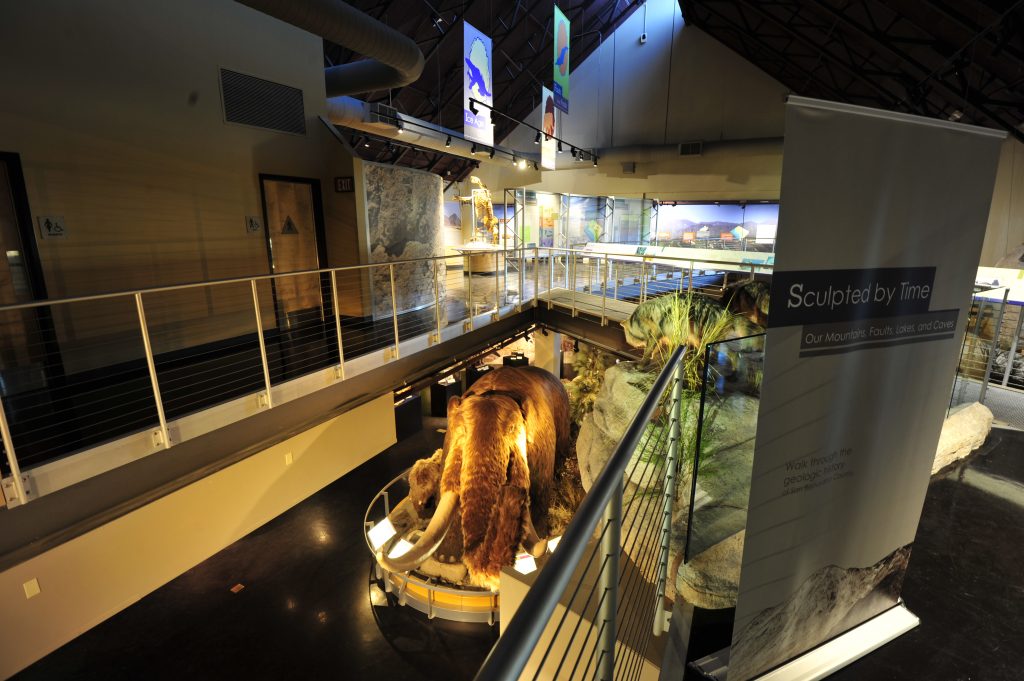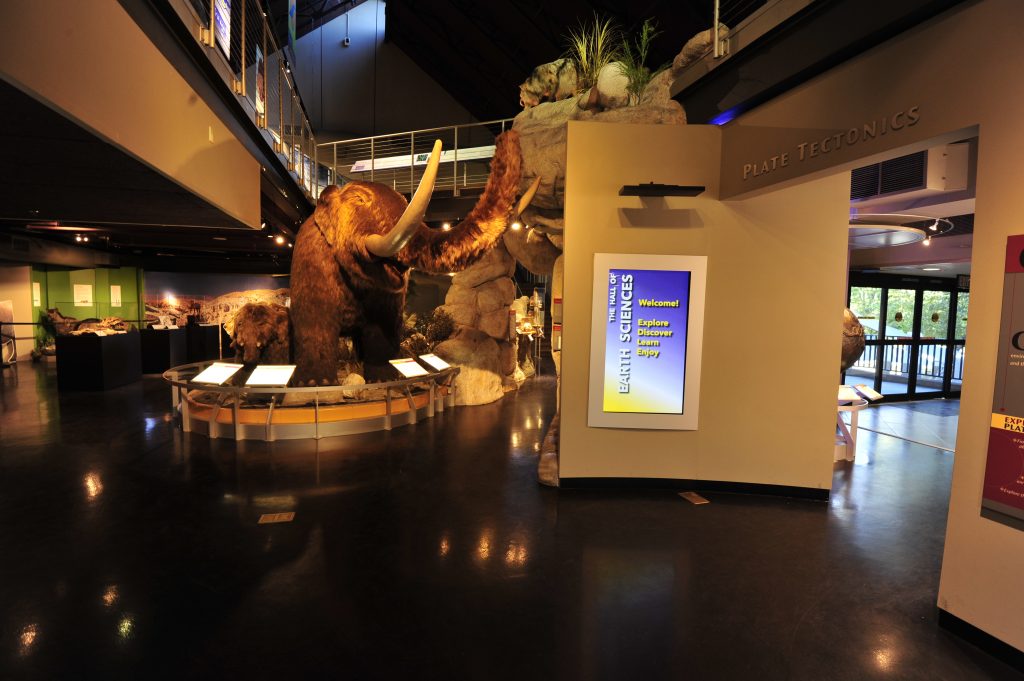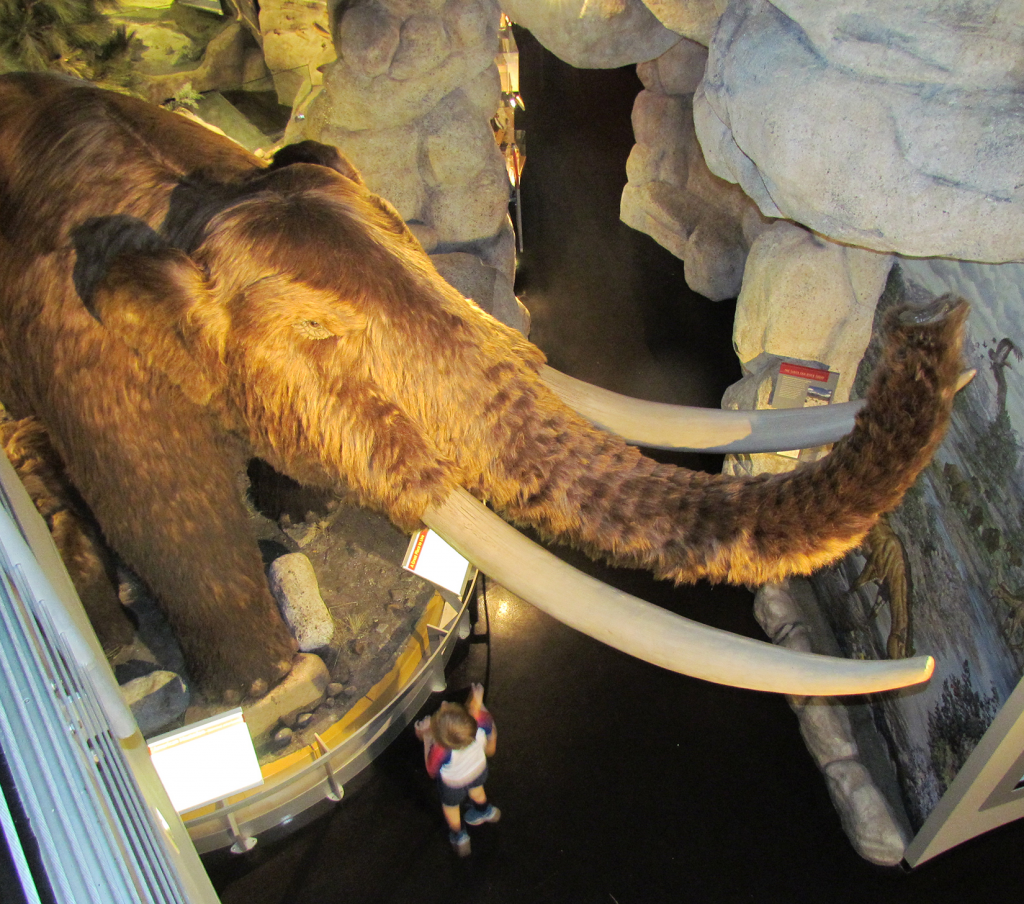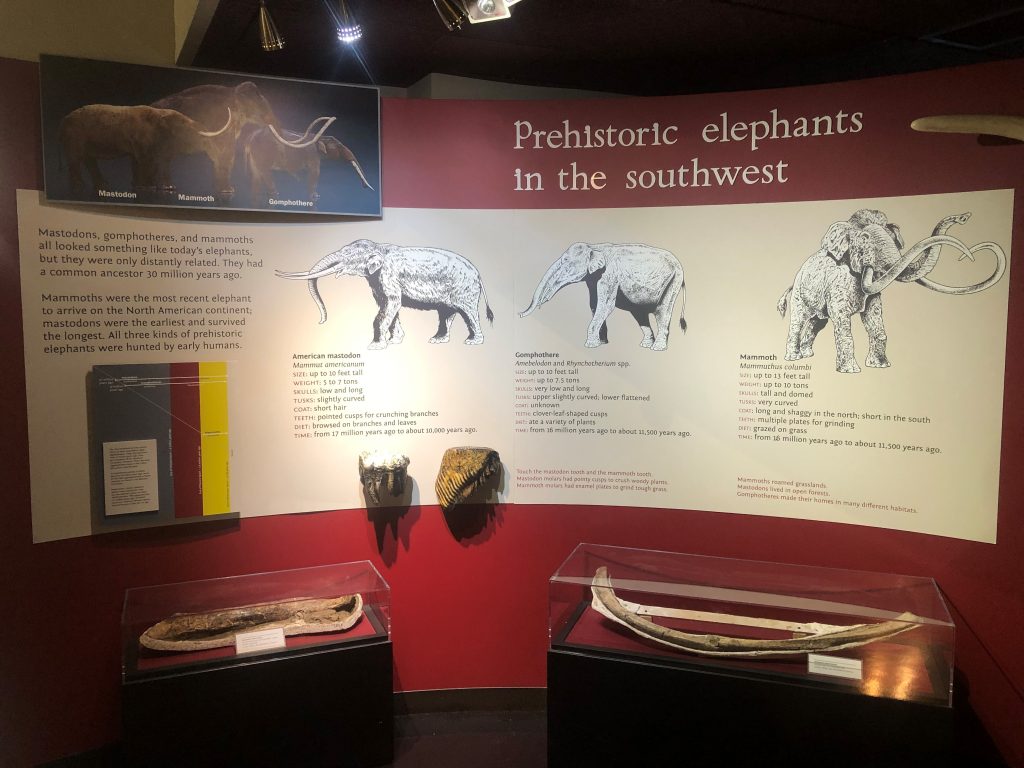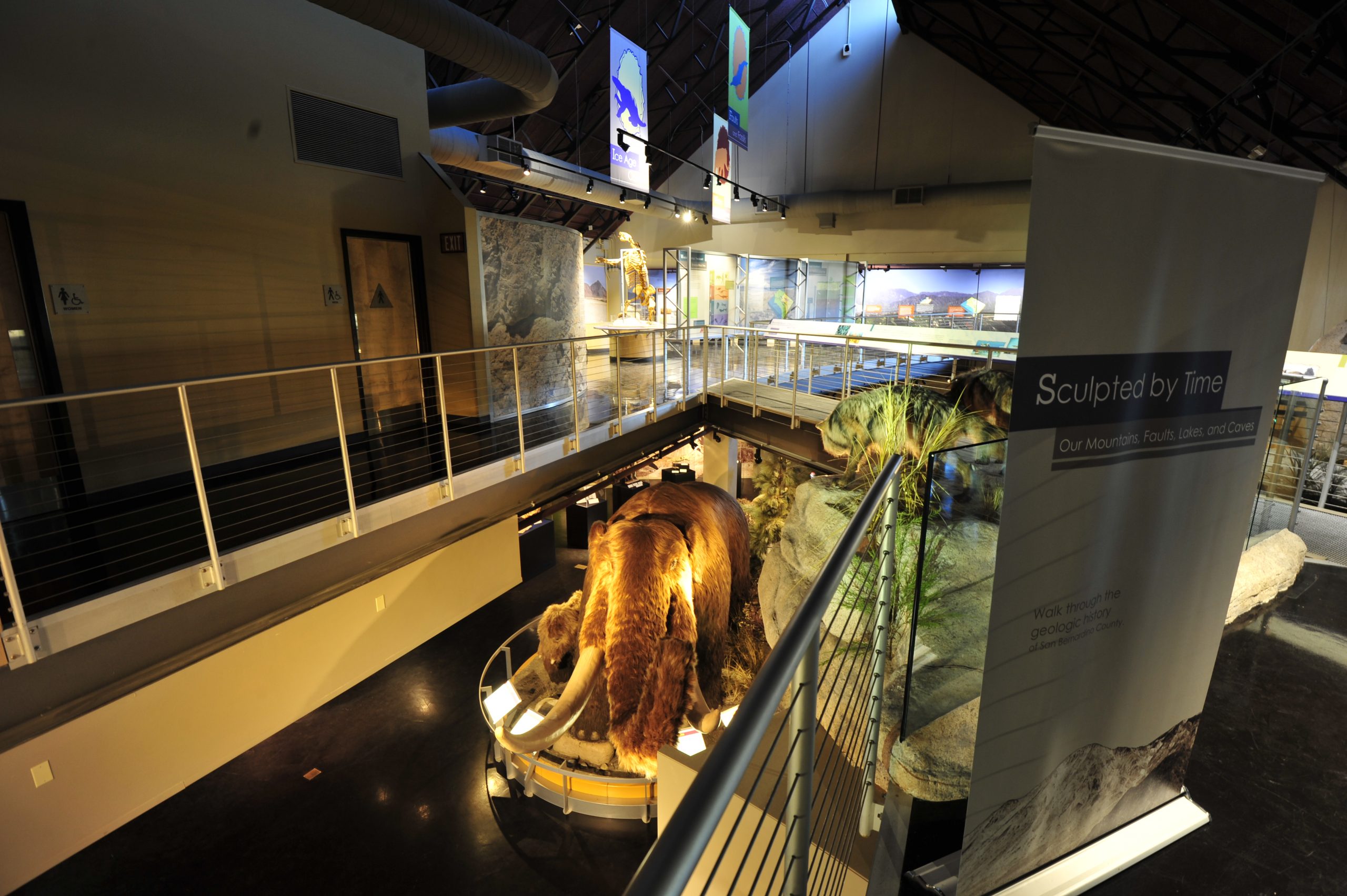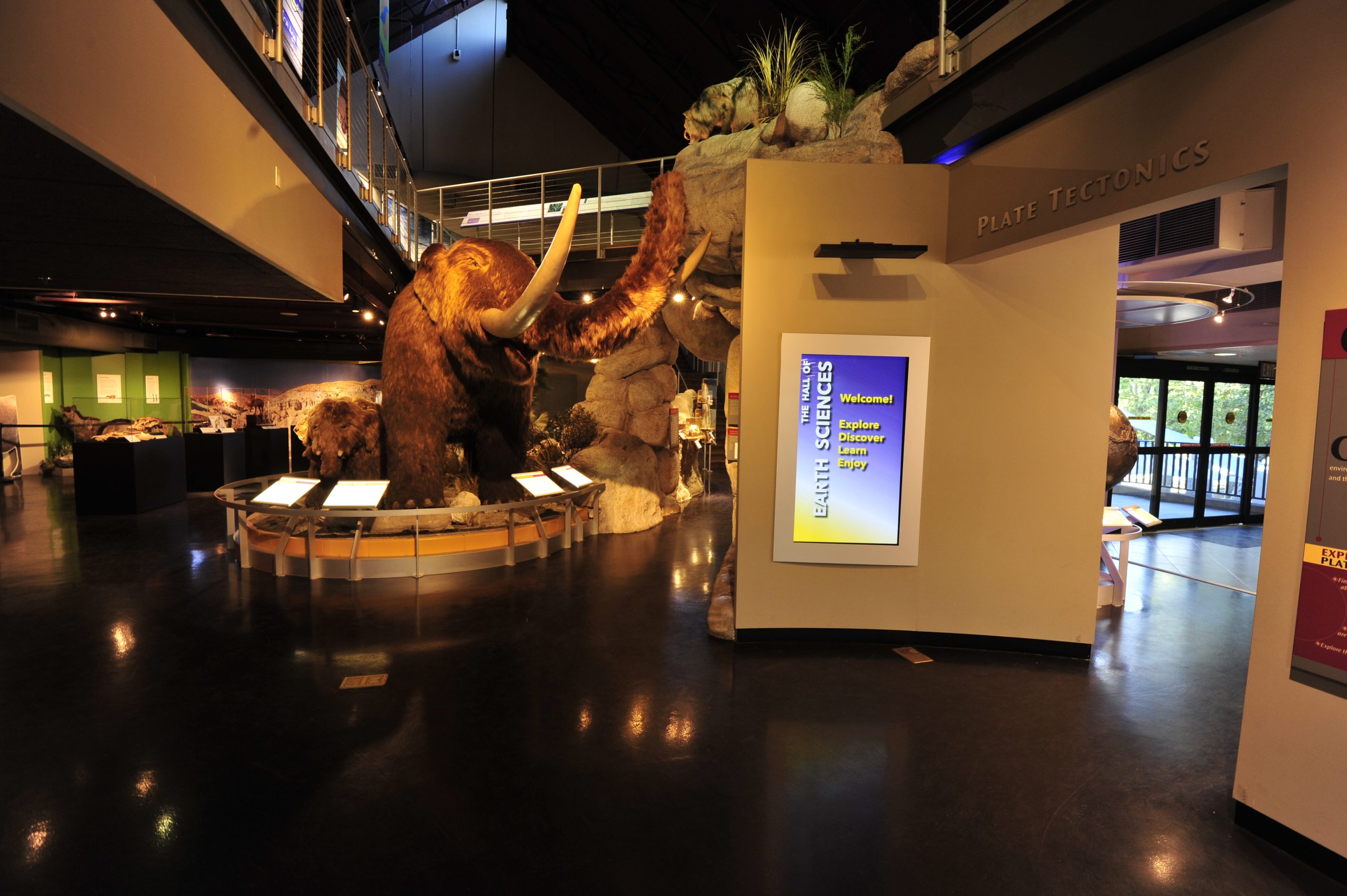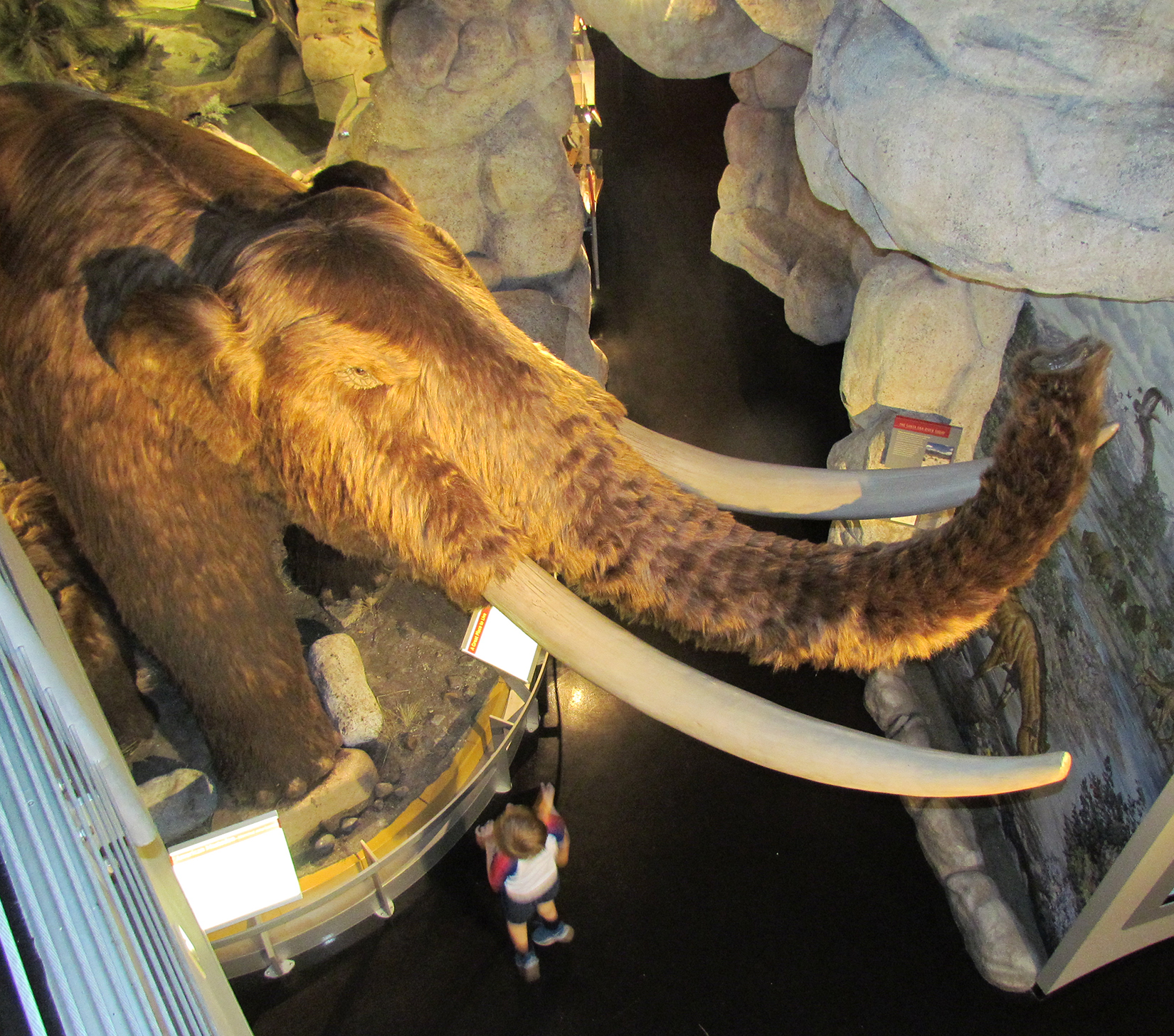Path of the Mastodon: Death to Discovery
About the Exhibition
I am not a Mammoth!
Often confused with mammoths (†Mammuthus sp.), mastodons (†Mammut sp.) are actually a distinct and separate group of extinct animal, though they share similar characteristics. Both belong to the order Proboscidea, which includes modern elephants and their extinct relatives. The most visible distinction between mammoths and mastodons comes from looking at their teeth: whereas mammoths have plate-like teeth resembling those of modern elephants, mastodons have pointed cusps with deep grooves between them. Mastodons thrived in Southern California during the Pliocene and Pleistocene epochs between 5.3 million and 11,000 thousand years ago. Today there are 5 recognized species of Mastodon known throughout the fossil record, including a new species of mastodon discovered in 2019 called †Mammut pacificus. Commonly known as the pacific mastodon, †M. pacificus was probably endemic to the West Coast, where it has been found from southern California to southern Idaho.
Highlights
